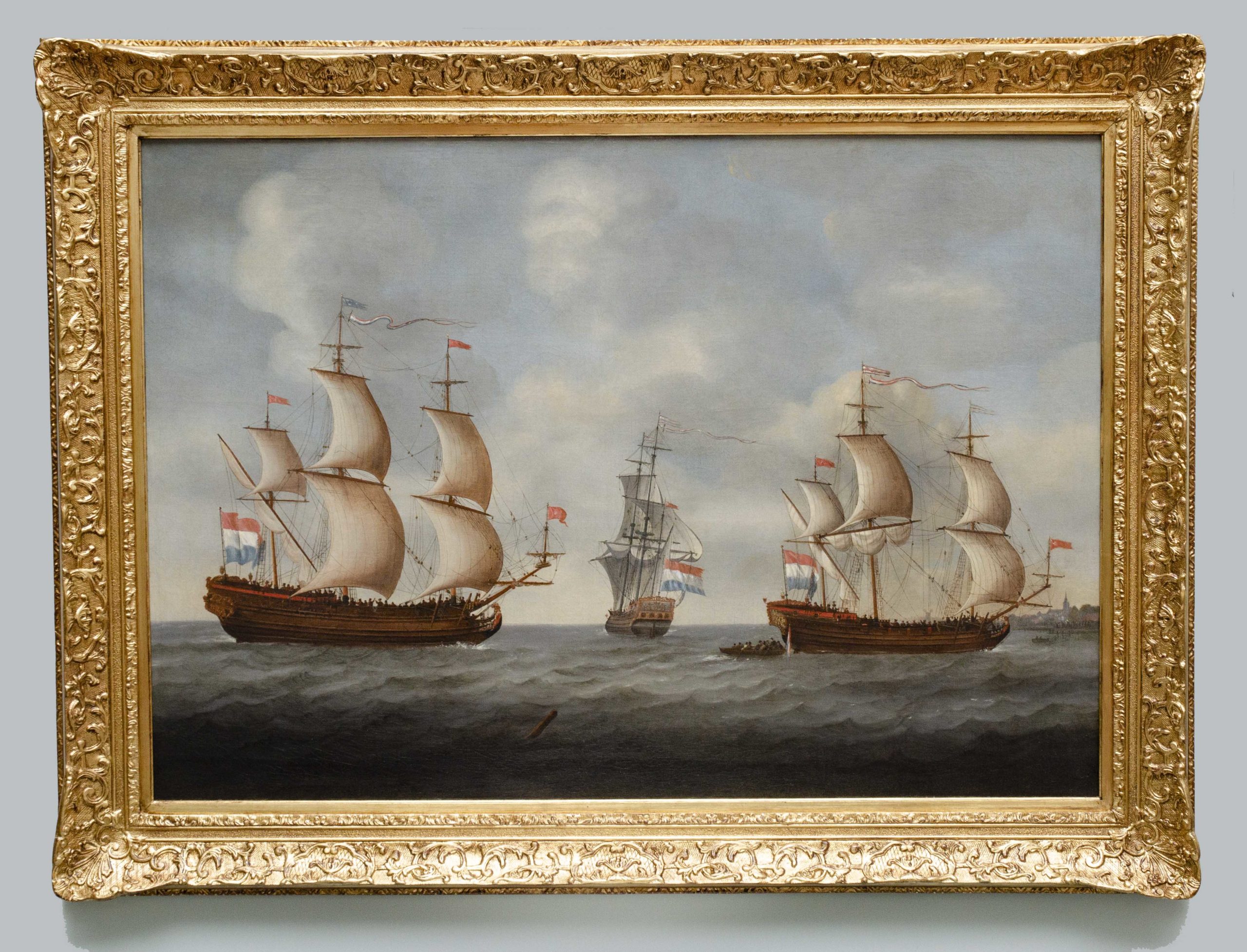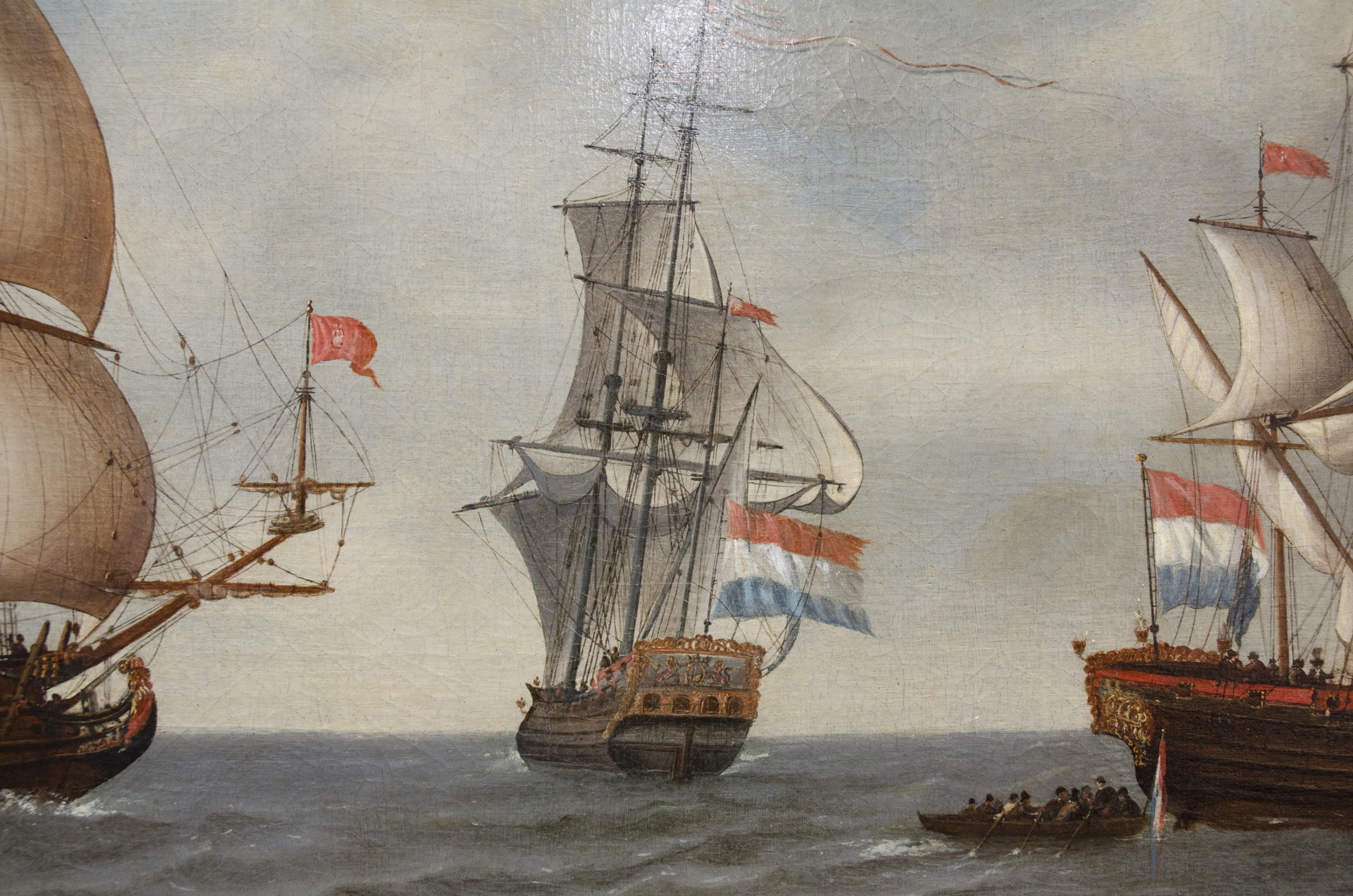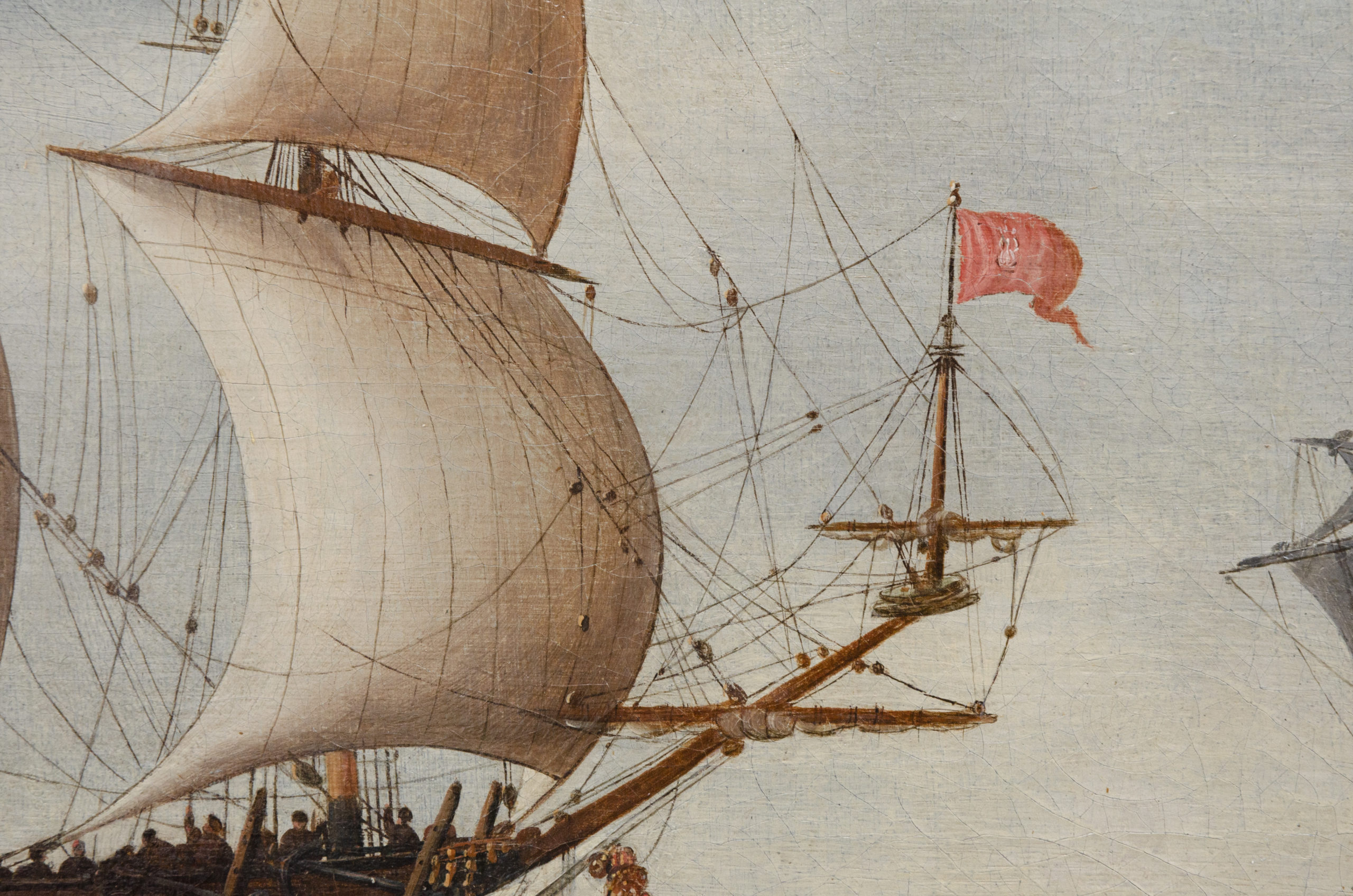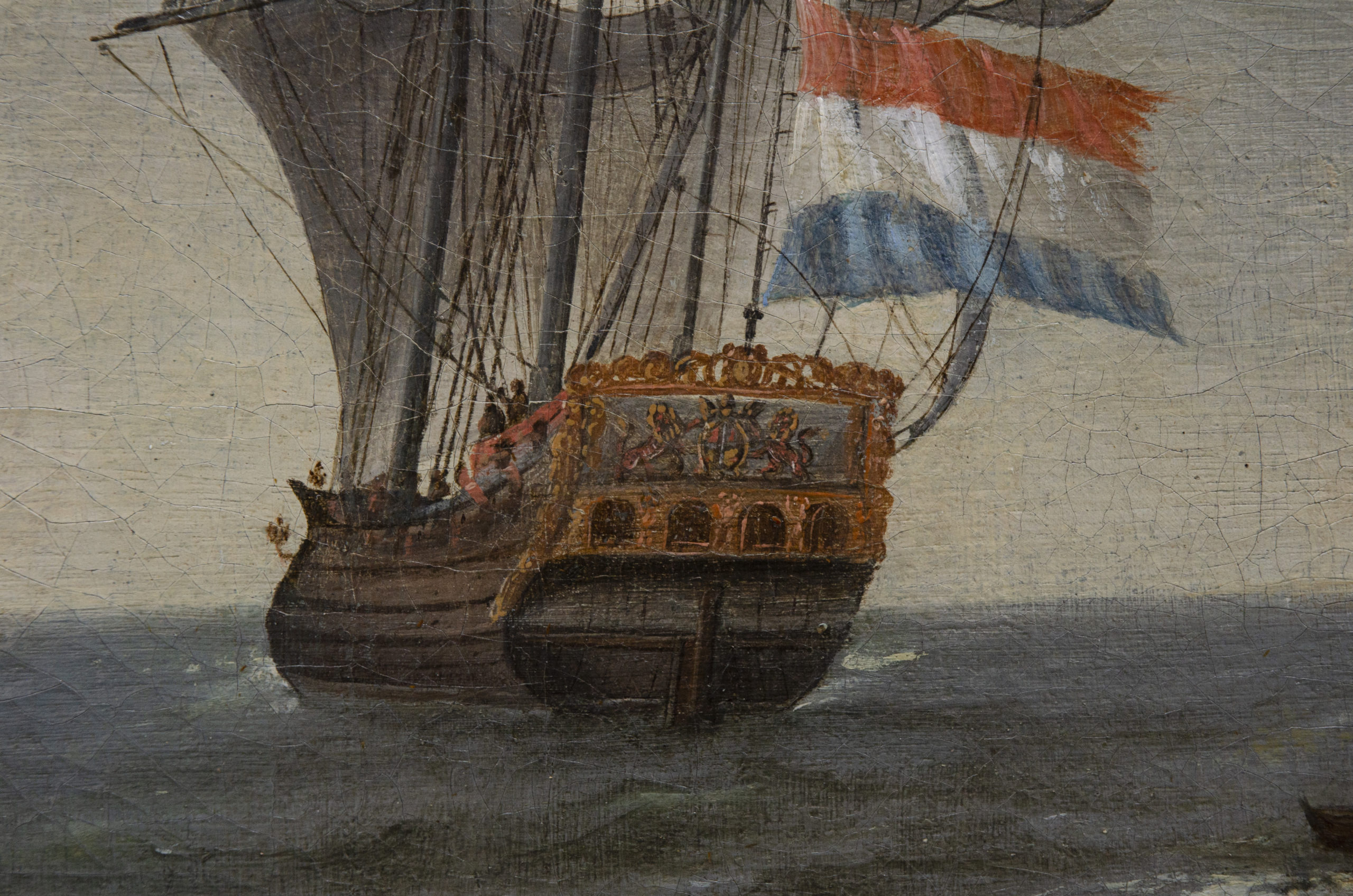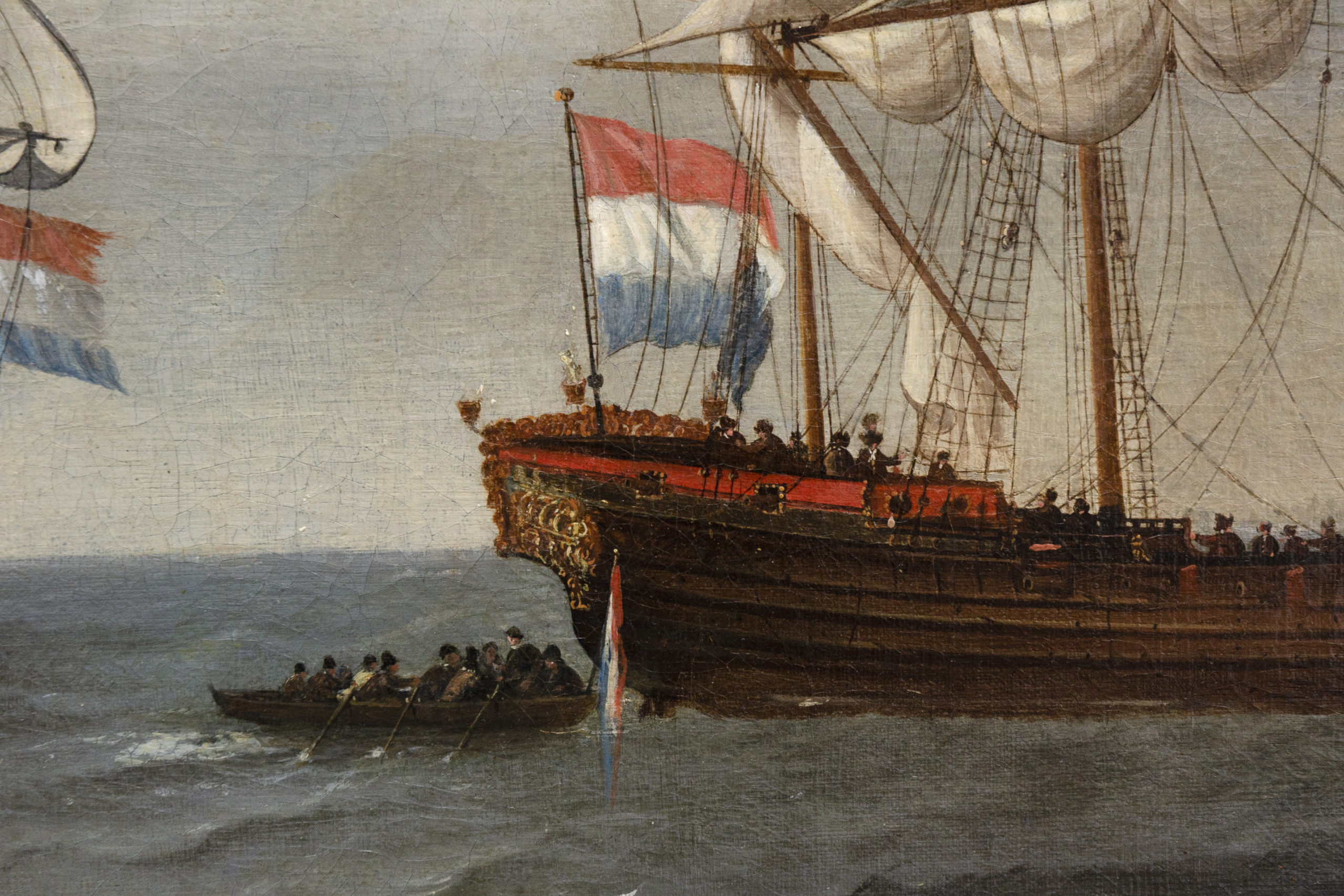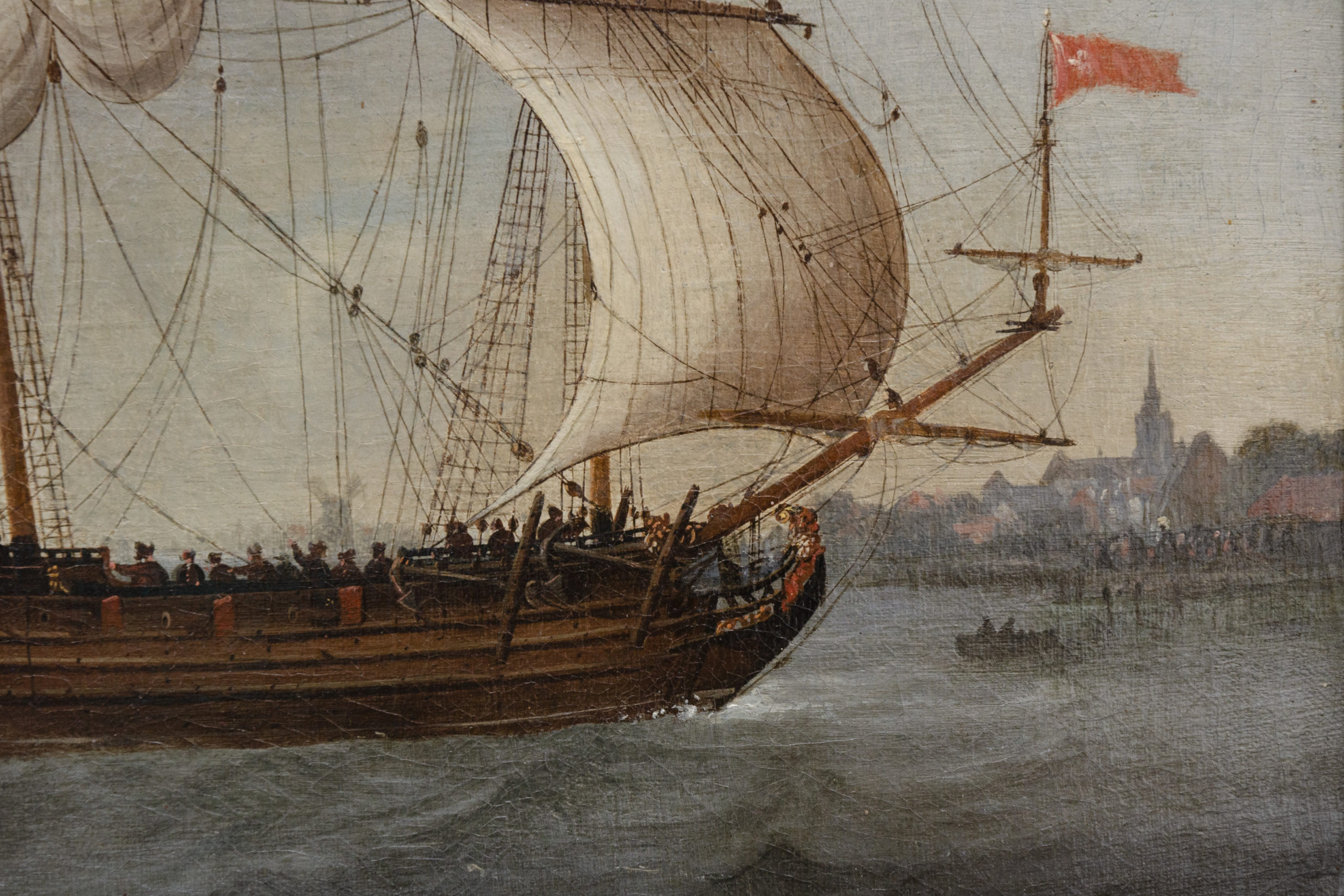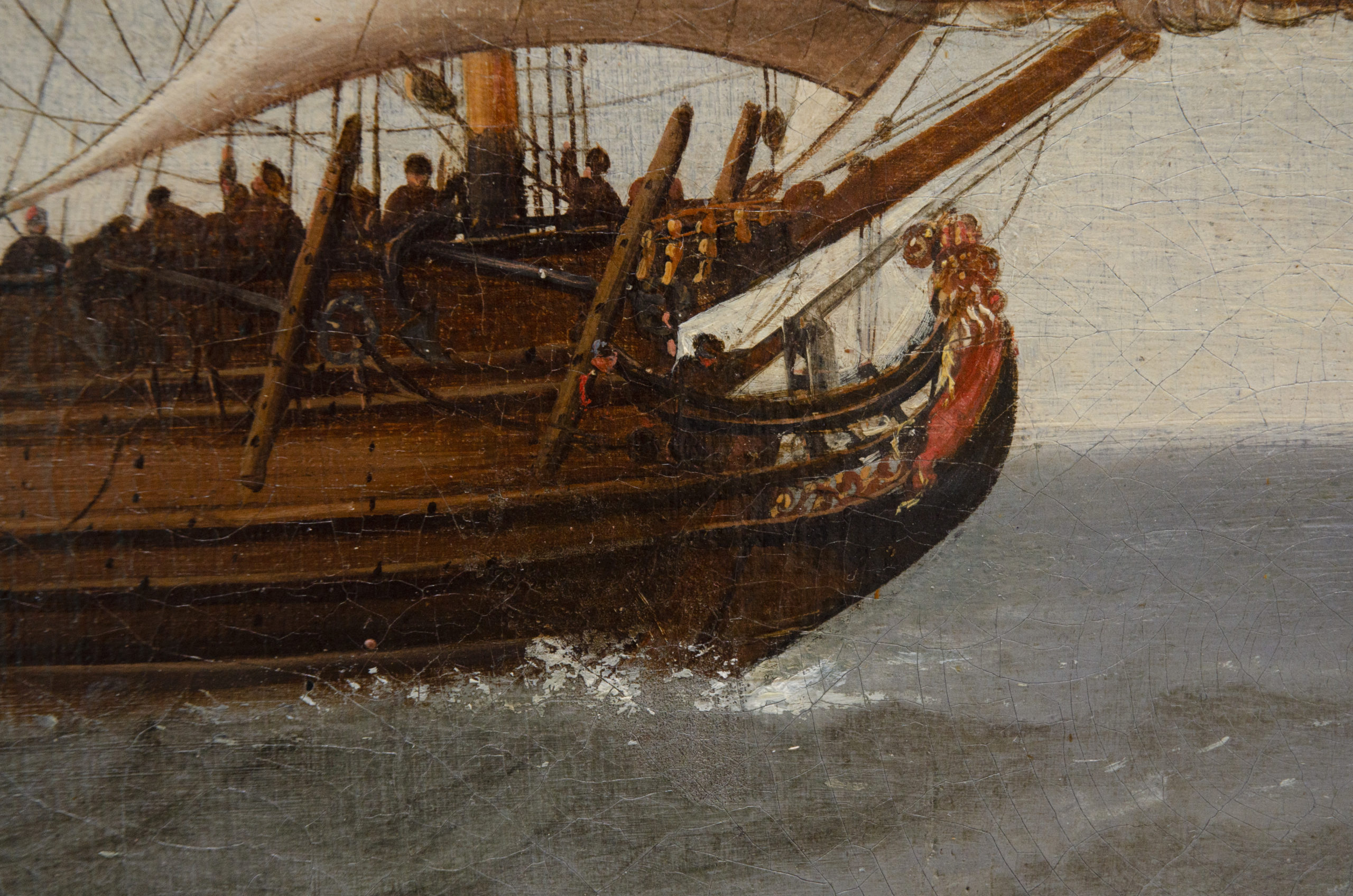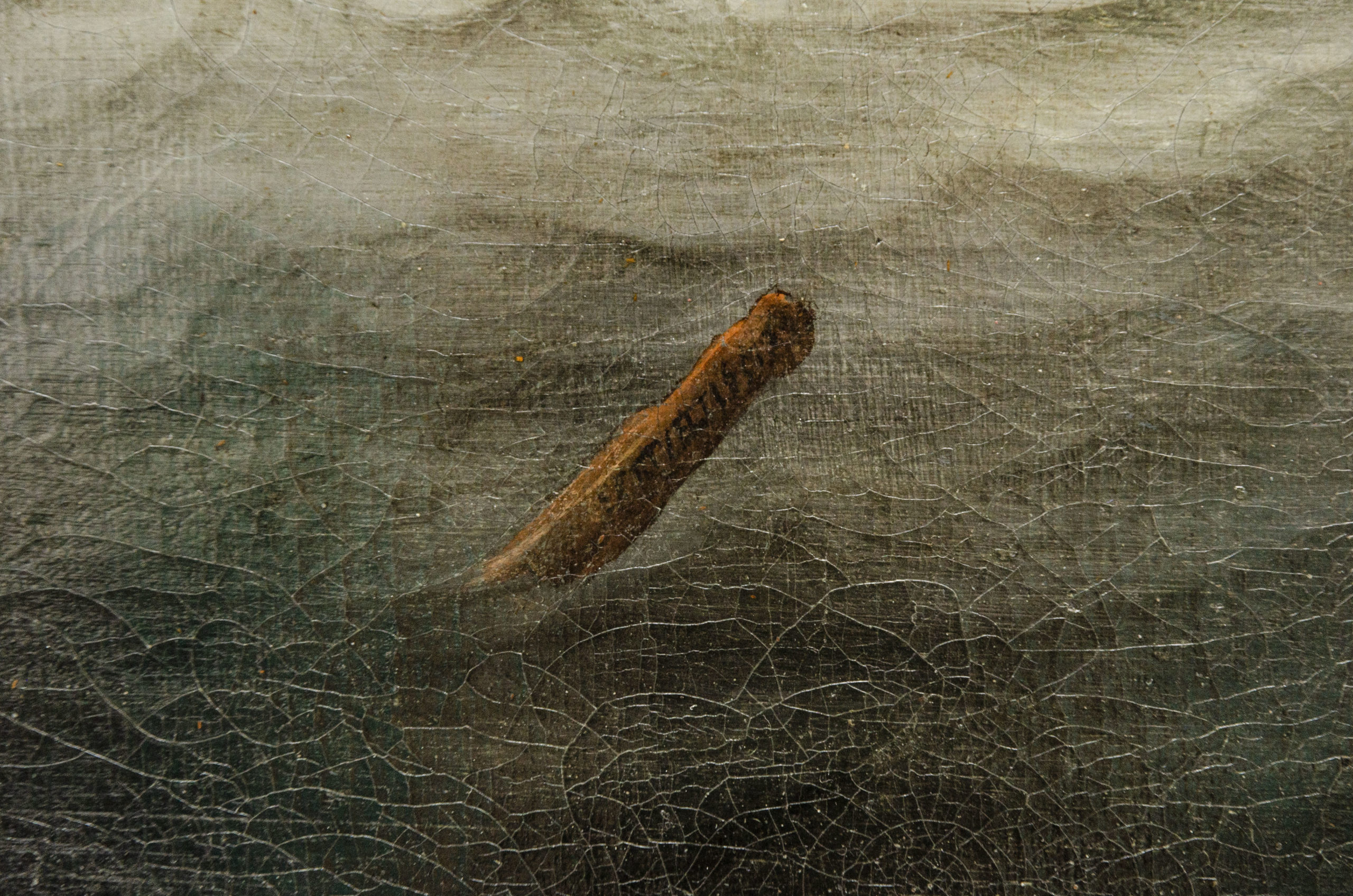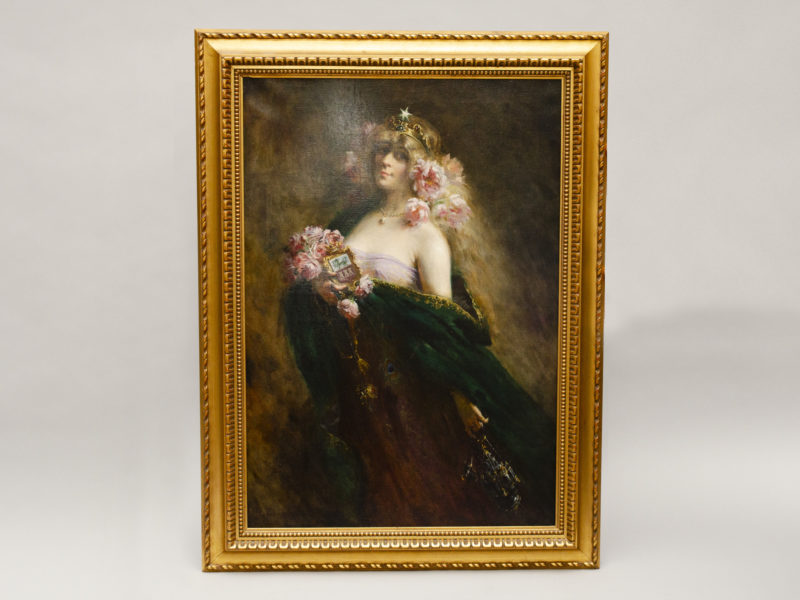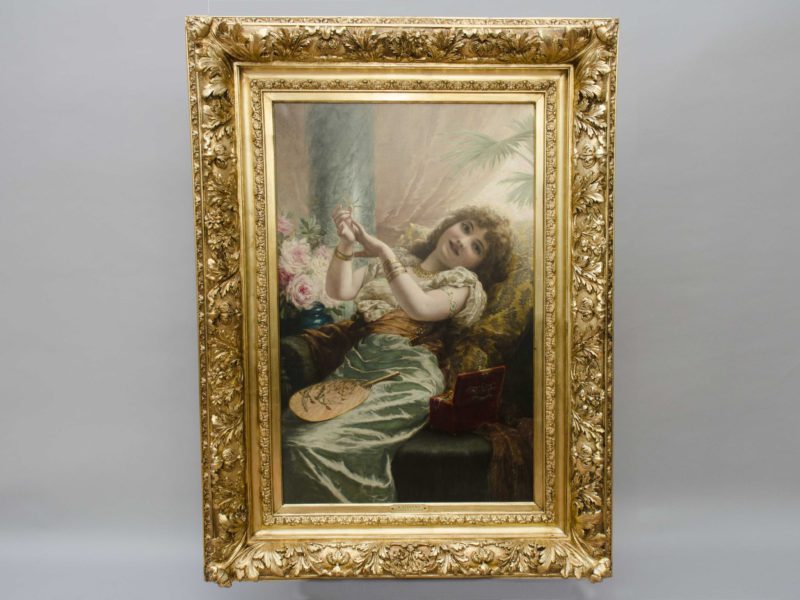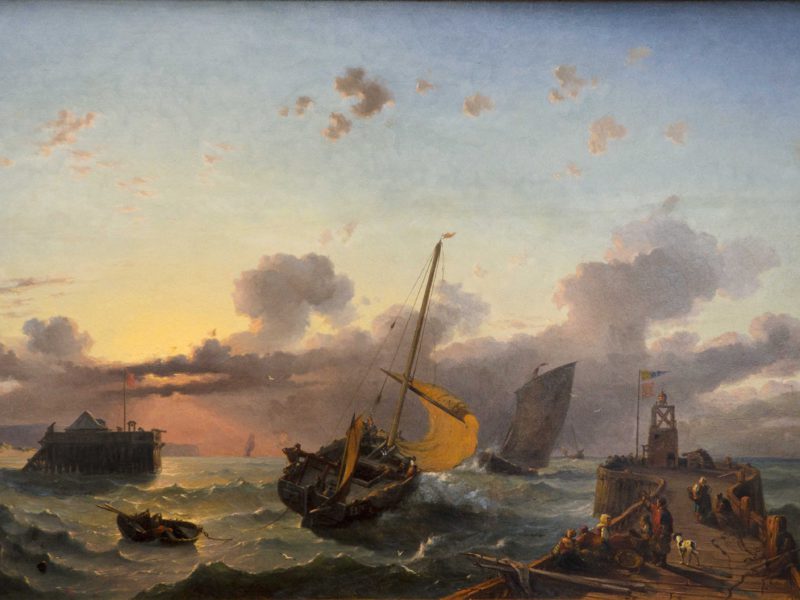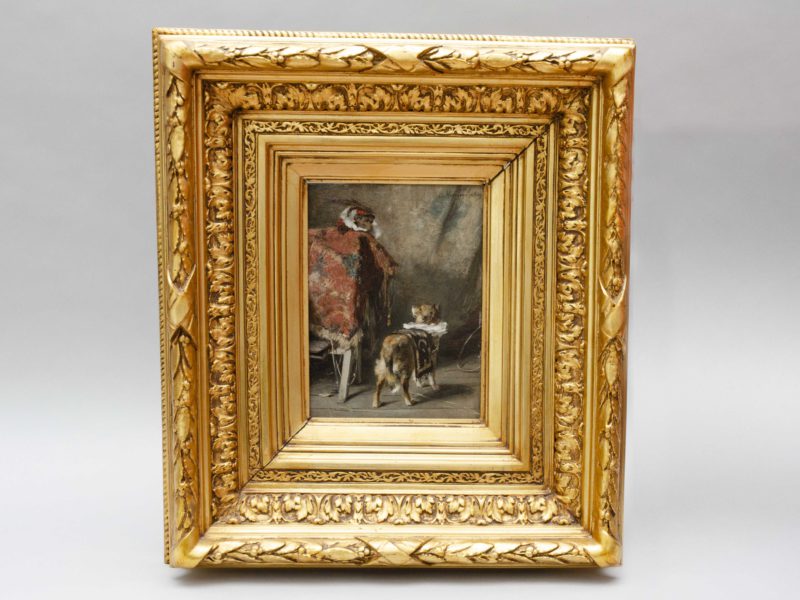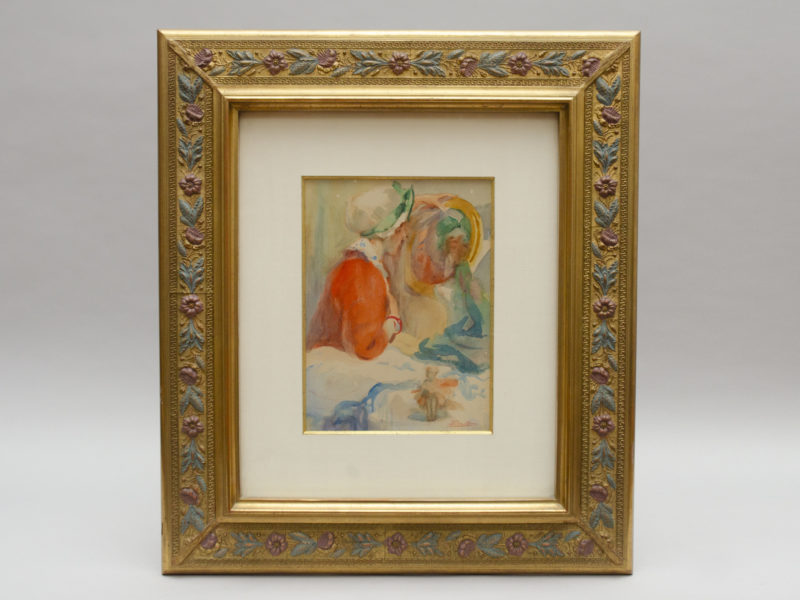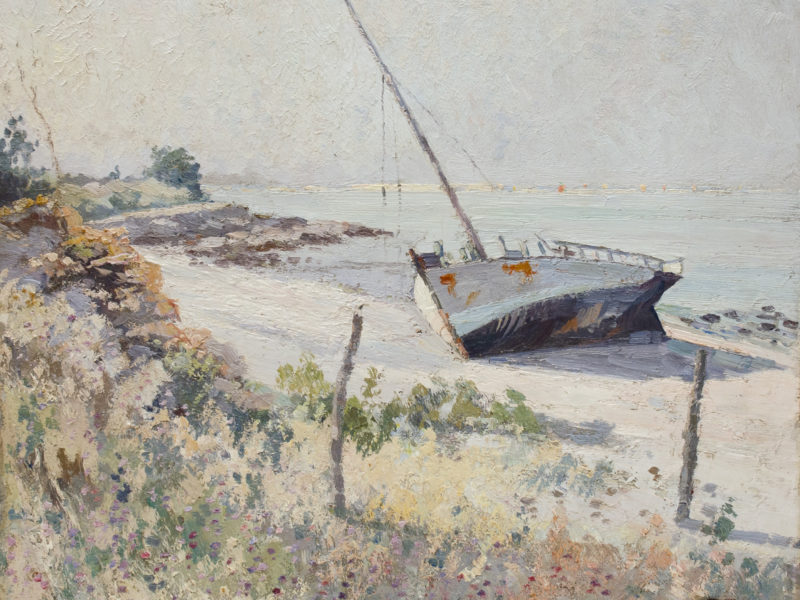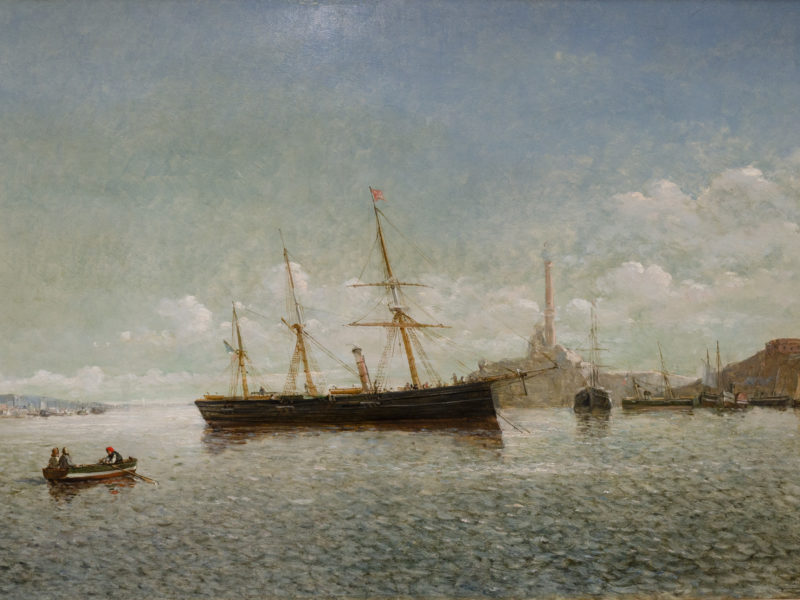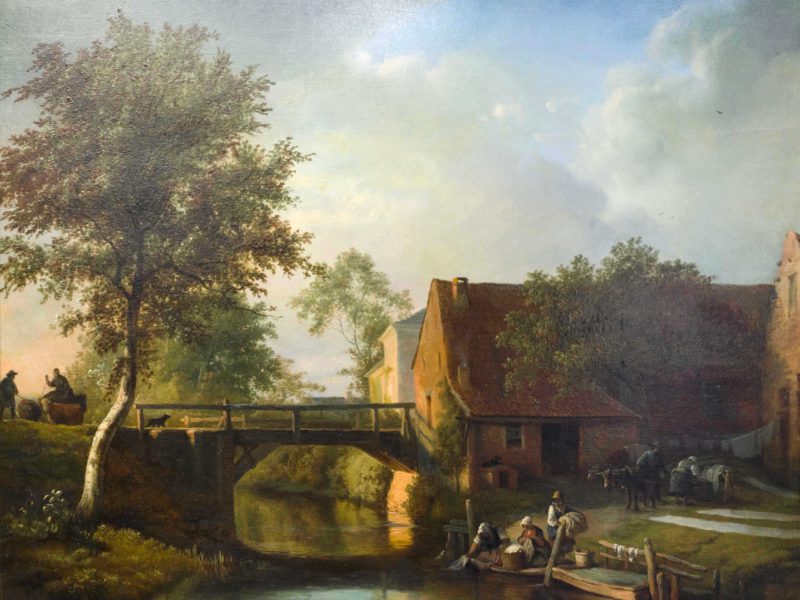Seascape “departure from Vlissingen”, Andries Van Eertvelt, 1651
Out of stock
Important seascape depicting the departure of a large thee-master ship from the coastal city Vlissingen in Holland. A large crowd on two other boats salutes the departing ship, a canon is still smoking from firing a bullet to celebrate the event. On every, ship, the Dutch flags and the “blood” flag with a jug, symbol of the city of Vlissingen. On the right, the skyline of the city, which was an important harbour and ship construction site of the large vessels of the Dutch East India Company and home of the sea hero, Admiral Michiel de Ruyter (1607-1676). Signed and dated Andries Van Eertvelt (Aertvelt), 1651, the year before his death. Oil on canvas, the frame is 19th century.
Size: H 82cm x W 118 cm – H 105cm x W 140 cm
Dutch school of the mid-17th century.
Liter.: Andries Van Eertvelt is a marine painter of the Baroque era. Born in Antwerp, he became a member of the Guild of St. Luke in 1610, he became the master of many artists. In 1627, he decided to go to Italy following the death of his wife. In Geneva, he worked in the studio of Cornelis de Wael. In 1630, he returned to Antwerp. In 1633, Antoon Van Dijck painted his portrait. Great painter, he gives his works a dramatic and intense dimension, playing with effects of light and shade.
Works in museums in Vlissingen, Ghent, Wrocław, Greenwich, Prado in Madrid, Nuremberg, Vienna, Schwerin (D)
The Dutch East India Company (known in Dutch as the Vereenigde Oost-Indische Compagnie, or VOC, literally “United East India Company”) was a trading company established by the United Provinces in 1602 to trade with Asia. For almost two centuries it was one of the pillars of Dutch capitalist power and imperialism.
The towns of Zeeland, Vlissingen, Middelburg and Veere together took a quarter of the shares in this first multinational. The other participants were Amsterdam, Rotterdam, Delft, Hoorn and Enkhuizen. Besides spices and other raw materials, increasingly finished products such as silk and porcelain were transported to the Netherlands over the centuries. This created a need for larger ships. The Zeeland towns like Vlissingen and Middelburg took advantage of this development with their deep navigation channels around the island. After transshipment in Middelburg or Vlissingen, the goods were transported along various shipping routes to the Dutch and Flemish cities and their hinterland. Partly because of this, Vlissingen grew into a prosperous city.
Vlissingen was also a center where the ships were built. The “Voc” vessels were large wooden ships with solid hull containing several decks. They could accommodate a large amount of merchandise, crew and usually also several cannons. They were predominantly three-masters with transverse sails, varying in length from about 40 to almost 60 meters. The tonnage was usually somewhere around 1,000 tons.
Zeeland had its own war fleet. The ships of the VOC could therefore also be used as warships.
Out of stock
Contact us